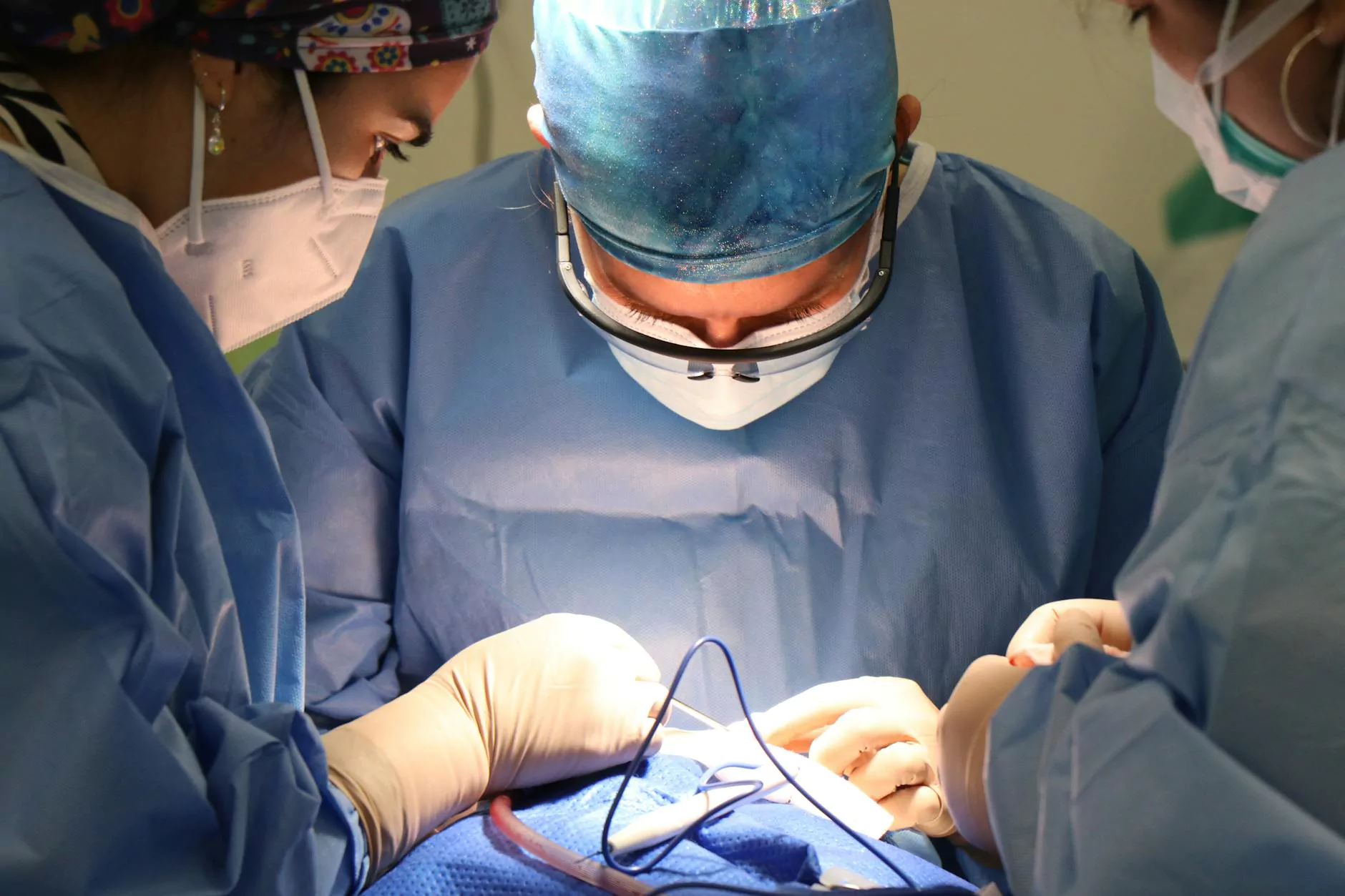Surgical Knife Types: A Comprehensive Guide for Medical Professionals

The world of surgical instruments is vast and intricate, with each tool designed for very specific functions. Among these instruments, the surgical knife holds a critical position due to its role in precision cuts during medical procedures. Understanding the different types of surgical knives is essential for every medical professional. In this article, we will explore the different types of surgical knives, their applications, and what you need to consider when selecting the right one for your practice.
The Importance of Choosing the Right Surgical Knife
The selection of a surgical knife can greatly affect the outcome of a procedure. The right knife not only enhances the surgeon's ability to perform delicate tasks but also minimizes patient risks associated with improper tool usage. Here are some reasons why the choice of surgical knife is important:
- Precision: A well-designed surgical knife provides the accuracy required for delicate procedures.
- Efficiency: The right knife reduces the time taken for incisions, enhancing the overall efficiency of surgery.
- Safety: Using appropriate knives minimizes the risk of complications during the surgery.
Understanding Surgical Knife Types
Surgical knives come in various types, each categorized by its blade shape, size, and intended use. Below, we will delve into some of the most common types of surgical knives:
1. Scalpel
The scalpel is perhaps the most recognized type of surgical knife. It features a sharp blade and is commonly used for making incisions in the skin during surgeries. The scalpel can further be divided into:
- Disposable scalpels: Made from stainless steel, these scalpels are designed for single-use to prevent cross-contamination.
- Reusable scalpels: Comprised of a handle and interchangeable blades, these scalpels can be sterilized and reused multiple times.
2. Surgical Blade
Surgical blades are designed to be attached to a handle, typically a scalpel handle, and come in various shapes and sizes. Some common types of surgical blades include:
- Blade #10: Used primarily for making large incisions in skin or fat.
- Blade #11: A pointed blade ideal for stab incisions, often used in procedures like drainage.
- Blade #15: A smaller, curved blade that is preferred for precision incisions and in areas requiring detailed work.
3. Electrosurgical Knife
An electrosurgical knife uses electrical energy to cut through tissue while simultaneously cauterizing blood vessels. This type of knife is beneficial for:
- Minimizing bleeding: It cauterizes as it cuts, reducing the risk of excessive blood loss during surgery.
- Improving visibility: By cutting and coagulating simultaneously, it ensures a clearer surgical field.
4. Laser Surgical Knife
The laser surgical knife employs focused laser light to vaporize tissue, making it ideal for procedures requiring minimal damage to surrounding areas. Notable advantages include:
- Precision: Allows for incredibly precise incisions.
- Reduced healing time: Generally, there is less trauma to tissues, which can result in quicker recovery for patients.
5. Suture Scissors
Although not a traditional surgical knife, suture scissors play a crucial role in surgeries. These scissors are specially designed for cutting sutures and come with blunt tips for safe operation. They are essential for:
- Removing sutures: Ensuring that sutures are removed smoothly and cleanly without damaging surrounding tissues.
- Facilitating access: Aid in accessing internal structures post-surgery by ensuring closing incisions are cleanly managed.
Factors to Consider When Choosing a Surgical Knife
When selecting a surgical knife, surgeons must consider several key factors:
1. Procedure Type
Different surgical procedures necessitate specific types of knives. For example, a scalpel may be sufficient for making initial incisions while an electrosurgical knife might be necessary for procedures requiring more control and reduced bleeding.
2. Material Quality
The quality of materials used in surgical knives can influence durability, sterility, and performance. Surgical knives are generally made of stainless steel, known for its resistance to corrosion and ability to be sterilized effectively.
3. Blade Sharpness and Shape
Different blades have different levels of sharpness and specific shapes tailored for diverse functions. A sharp blade is essential for precise incisions, while the blade's shape can determine the ease and control of usage.
4. Ergonomics
The ergonomic design of the knife handle can impact the surgeon's grip, affecting control and comfort during procedures. Surgeons should choose knives that feel comfortable in their hands, especially during long operations.
Best Practices for Surgical Knife Maintenance
Proper maintenance of surgical knives is crucial for ensuring their longevity and effectiveness. Here are some best practices:
- Cleaning: Ensure knives are cleaned thoroughly after each use to prevent contamination.
- Sterilization: Follow strict sterilization protocols before every surgery to uphold patient safety.
- Inspection: Regularly inspect knives for signs of wear, corrosion, or damage to maintain optimal performance.
Conclusion
Understanding the different types of surgical knives and their applications is crucial for medical professionals who strive to provide the best surgical outcomes. From traditional scalpels to advanced electrosurgical and laser knives, the choices available are vast but tailored for specific needs. By considering the factors outlined in this article, surgeons can select the right instruments that not only enhance their performance but also ensure patient safety and satisfaction.
As you engage in your medical practice, remember that the right tools make all the difference. Equip yourself with comprehensive knowledge about surgical knife types and ensure that your toolkit is always ready to deliver excellence in surgical care. Your patients will thank you for it!









